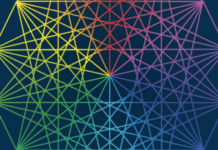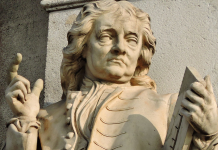A Brief History
This page provides an extremely concise introduction to Taoism from a historical point of view. The main events in the history of Taoism have been divided into five sections up to the Yuan dynasty; for further explanations we recommend Taoism: growth of a religion by Isabelle Robinet and the monographic studies you can find in our bibliography.
The Warring States (453-222 B.C.)
Laozi Daode jing (IV-III c. B.C.) is the first scripture on the concept of Dao, described as the ineffable dynamic unity source of multiplicity. Man should reverse the process and return to unity by means of non-action (wuwei), which is also a political ideal. On the contrary, Zhuangzi (IV c. B.C.) conceives the Taoist Saint as a mystic, a supernatural being who identifies himself with the Universe, free from any social restraint. This image is closer to that of shamans (wu) and so-called “masters of techniques” (fangshi), who anticipate the figure of the Taoist priest, a searcher of immortality and an exorcist in control of natural phenomena.
That of Laozi and Zhuangzi is often referred to as “philosophical Taoism”, in contrast to a “religious Taoism” beginning with the Celestial Masters. These concepts hardly fit the actual reality.
The Han Dynasty (206 B.C.-220 C.E.)
Legalism and Confucianism form State ideology of the Chinese Empire under Qin and Han dynasties. The Huainanzi (II c. B.C.) unifies the image of the Saint with that of the political man, promoting a mixture of Taoist and Confucian ideals. A similar sincretic vein characterizes the Huang-Lao school, which unifies the cults of the Yellow Emperor (Huangdi) and Laozi.
At the end of the Han Empire revolutionary and messianic sects emerge; among them, Zhang Daoling’s Way of the Five Measures of Rice (Wudou mi dao), also known as Orthodox One (Zhengyi). In 215 his nephew Zhang Lu changes the name of the school to Celestial Masters (Tianshi), and makes of it the first hierarchically organized Taoist “church”, concerned with the limitation of popular cults and the establishment of social ideals through moral precepts and public liturgical ceremonies. The school becomes the highest authority on ritual orthodoxy.
The Chinese “Middle Ages” (220-581)
Central to Ge Hong’s (280-340) Baopuzi is the idea of immortality as a natural physical transformation; among the techniques to obtain it are the “nourishment of life” (yangsheng) through the correct circulation of vital energies – breath (qi) and seminal essence (jing) – and the use of drugs and pills of immortality (external alchemy).
The IV century sees the birth of two of the main Taoist traditions, representing mysticism and ritual, respectively. In the years 365-370 Yang Xi receives the Supreme Purity (Shangqing) revelation. This tradition unifies the goal of early searchers of immortality and the ideal of the cosmic Saint of the Zhuangzi; central to its practices is the return to unity, the identification of human microcosm with macrocosm by mean of “ecstatic flights” and visualization of bodily deities. Tao Hongjing is the most representative master of the school.
Then, in 402, Ge Chaofu compiles new scriptures and attributes them to the Numinous Treasure (Lingbao) revelation, received by his ancestor Ge Xuan. This school, strongly influenced by Mahayana Buddhism, incorporates the doctrine of rebirth and retribution and develops the ideal of universal liberation in contrast to individual immortality. More elements that form Lingbao teaching are Confucian and Buddhist virtues, messianism and the liturgy of the Celestial Masters, which undergoes a deep evolution.
In 424 Taoism becomes the official religion at the Northern Wei court thank to Celestial Master Kou Qianzhi, who “purifies” the teachings of Zhang Daoling and his descendants. This period of glory lasts until the first half of the VI century.
The Tang Dynasty (618-907)
Tang emperors generally support Taoism, but the tendency ot the period is towards sincretism. The Double Mistery school (Chongxuan) integrates Indian speculation (Madhyamika) to the interpretation of the Daode jing.
Internal contemplation (neiguan) anticipates the birth of internal alchemy (neidan).
The Song and Yuan Dynasties (960-1368)
Zhenzong and Huizong are among the most supportive emperors of the Song dynasty; the latter is particularly favorable to the school of the Divine Empyrean (Shenxiao), based on the power of Thunder Rites. Other schools, such as that of Filial Piety (Jingming zhongxiao), incorporate Confucian moralism.
The development of internal alchemy continues with the Zhong-Lü and the Complete Perfection (Quanzhen) schools in the North and the Southern tradition of Zhang Boduan and Bai Yuchan. Breath, spirit (shen) and seminal essence become the ingredients of an alchemical transformation within the human body, a process based on the preservation and circulation of Yin and Yang.








